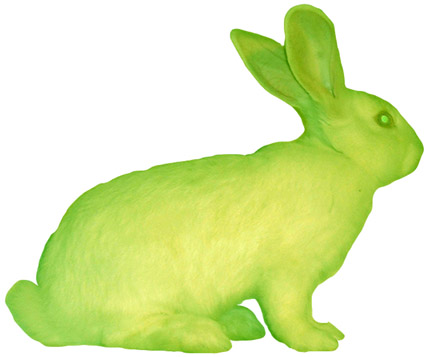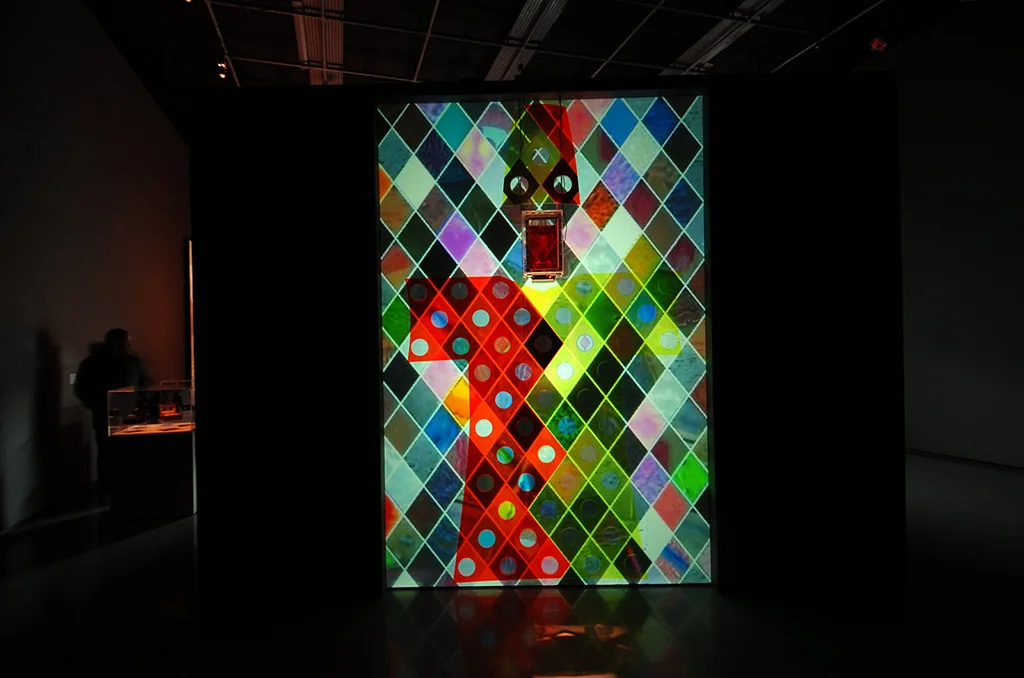Week 6: Biotech + Art
Bioart is an interdisciplinary field that combines art with biotechnology in an effort to question the relationship between living and nonliving organisms. This is a particularly controversial topic because of its ethically questionable involvement with the manipulation of natural systems, including experimentation with animals. One such example, an iconic bioart piece, is the fluorescent bunny by Eduardo Kac. The fluorescent protein gene from the jellyfish Aequorea victoria was modified to increase its intensity and was inserted into a fertilized rabbit cell to give rise to Alba, a bunny that glows bright green under UV light (Young).
 |
| Alba, the GFP bunny |
Kac describes the bunny as a transgenic artwork and NOT a breeding project. The latter, he describes, is a “selection process” that aims to “create pure breeds with standard form and structure, often to serve a specific performative function”; by contrast, transgenic art “challenges notions of genetic purity” and “reveals the fluidity of the concept of species in an ever increasingly transgenic social context” (Kac). While I was skeptical of the entire point behind the fluorescent bunny, I’ve come to a better understanding of Kac’s motives after reading his blog. Still, I personally don’t agree with the manipulation/experimentation with animals in such a way.

Eduardo Kac and Alba, the fluorescent bunny
Another artist that stood out to me is one that I’ve recently become acquainted with during week 4. ORLAN’s Harlequin Coat is a bioart installation that examines the “integrity of the body in spaces of technology” (Baykan). ORLAN worked with Symbiotica to obtain cultures of cells from her skin, mixed with different human races and species, to create this piece. Harlequin Coat is a symbol for cultural cross-breeding. In an interview, ORLAN cites her inspiration from a philosophical text that depicts the Harlequin as a metaphor for multiculturalism and of “the acceptance of the other within oneself” (ORLAN).
 |
| Projection installation of Harlequin Coat by Steven Hughes and Dominic Perace |
References:
Baykan, B. “Into the Body of Another: Strange Couplings and Unnatural Alliances of Harlequin Coat.” Palgrave Studies in Performance and Technology. Palgrave Macmillan, 2015. https://doi.org/10.1057/9781137438164_2
Hughes, Steven, and Dominic Perace. Harlequin Coat. Alyian, 2008.
Kac, Eduardo. Alba, the GFP Bunny. Ekac, 2000.
Kac, Eduardo. “GFP Bunny.” Ekac, 2000, http://www.ekac.org/gfpbunny.html.
Kac Eduardo. Eduardo Kac and Alba, the Fluorescent Bunny. Ekac, 200
Young, Emma. “Mutant Bunny.” New Scientist, New Scientist, 22 Sept. 2000, https://www.newscientist.com/article/dn16-mutant-bunny/.
“Orlan: The Harlequin's Coat - Youtube.” YouTube, VISProductions, 24 Aug. 2010, https://www.youtube.com/watch?v=3v4miEBFXTY.
“What Is Bio Art?” ARTDEX, 3 May 2021, https://www.artdex.com/what-is-bio-art/.
I think the ethics of it all is a great point. I agree that It feels morally wrong to experiment on animals, but certain discoveries/expansions within the field of biotech couldn't progress without it. More discussions that thoughtfully include what a certain artists motives are become necessary to deal with any discomfort around the art.
ReplyDelete